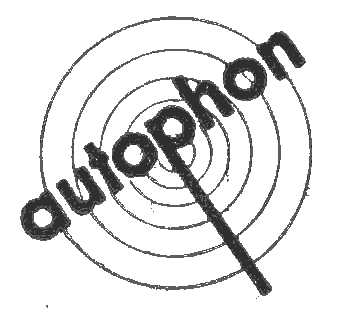

All Wave Receiver E-627
Autophon AG, Solothurn



|
All Wave Receiver E-627
|

|
|
überarbeitet am 1.9.2010 |
Kurzwellenempfänger Autophon E - 627: the last "hollow state" Swiss Army Shortwave Receiver
Autophon developed the E-627 as a successor of the E44 which still was using battery tubes.
It was the military shortwave receiver with the highest production numbers
(444 sets have been made) and is still considered as fairly common in Switzerland,
this might be due to the fact that these sets have been serviced regularly
at Swiss arsenals and usually are in very good condition. The receiver comes in a gray metal cabinet, a protective front cover
will cover up the whole front panel during transports and can be attached
to the back, when the receiver is in operation. The left side of the front panel can be divided in three sections: on the
top the antenna / earth connectors and the signal strength meter, in the middle
the dial, the bandswitch and the main tuning knob and a bottom row with all other
necessary controls. The antenna connector is of SO-239 type, underneath You find the earth
socket and two BNC connectors with protective lids giving You access to the receiver's
intermediate frequency and acting as a second antenna connector. Below You find the dial of the turret tuning assembly. Due to the construction of
the set, the analog dial is not linear, so on higher frequencies, the 100 kHz
lines are much nearer then in the low band segments - thus dial accuracy is
better low frequencies. Dial calibration has been made at the manunfacturer:
using a crystal controlled calibrator providing a spectrum of known frequencies,
the frequency marks have been engraved individually on each set's dial. The controls below are used for RF and AF signal processing: The switch
"Anti - Fading" next to the headphone sockets (one socket will switch
off the internal speaker, when headphones are plugged in, the other one won't)
activates the automatic gain
control (AGC), the RF-Gain control (called "Empfindlichkeit / Sensibilité")
is usually turned fully clockwise for standard operation with AGC on. The
BFO knob is called "Telegraphie - Überlagerer" (Telegraphy heterodyne) and
is used for CW and SSB reception. The bandwitch switch, which follows next on the right hand,
has a wide (+/- 3,5 kHz), narrow (+/- 2 kHz) and a "Filter" position. This will
enable a +/- 100 Hz crystal filter, the "Kristallfiler" control will be operational
only in this position and can be used to shift the passband of the filter to fade out
a nearby interfering signal. Further right, You find the volume control, called
"Laustärke/ Puissance" in german/french language. I love the performance of my E-627 on shortwaves: the 14 valve single
conversion set offers above average reception on shortwaves, I would compare
it's sensitivity and selectivity to the one of the Drake R-4B/C series and
better then the Satellit 3400 or Sony's SW-55. In some situations, I prefer
the set to the NRD-525, the conventional circuitry without synthesizer noise
or high frequency hiss makes listening very pleasant. This fifty year old set from the internationally not very well known manufacturer Autophon offers very pleasent shortwave reception - and usually this sets work very reliably, what You would expect from "Swiss Made" quality. Not to mention that Swiss Army gear is usually heavy, rock-solid and is designed and built to last centuries... weitere Lektüre: © Martin Bösch 26.5.2001
|
||||